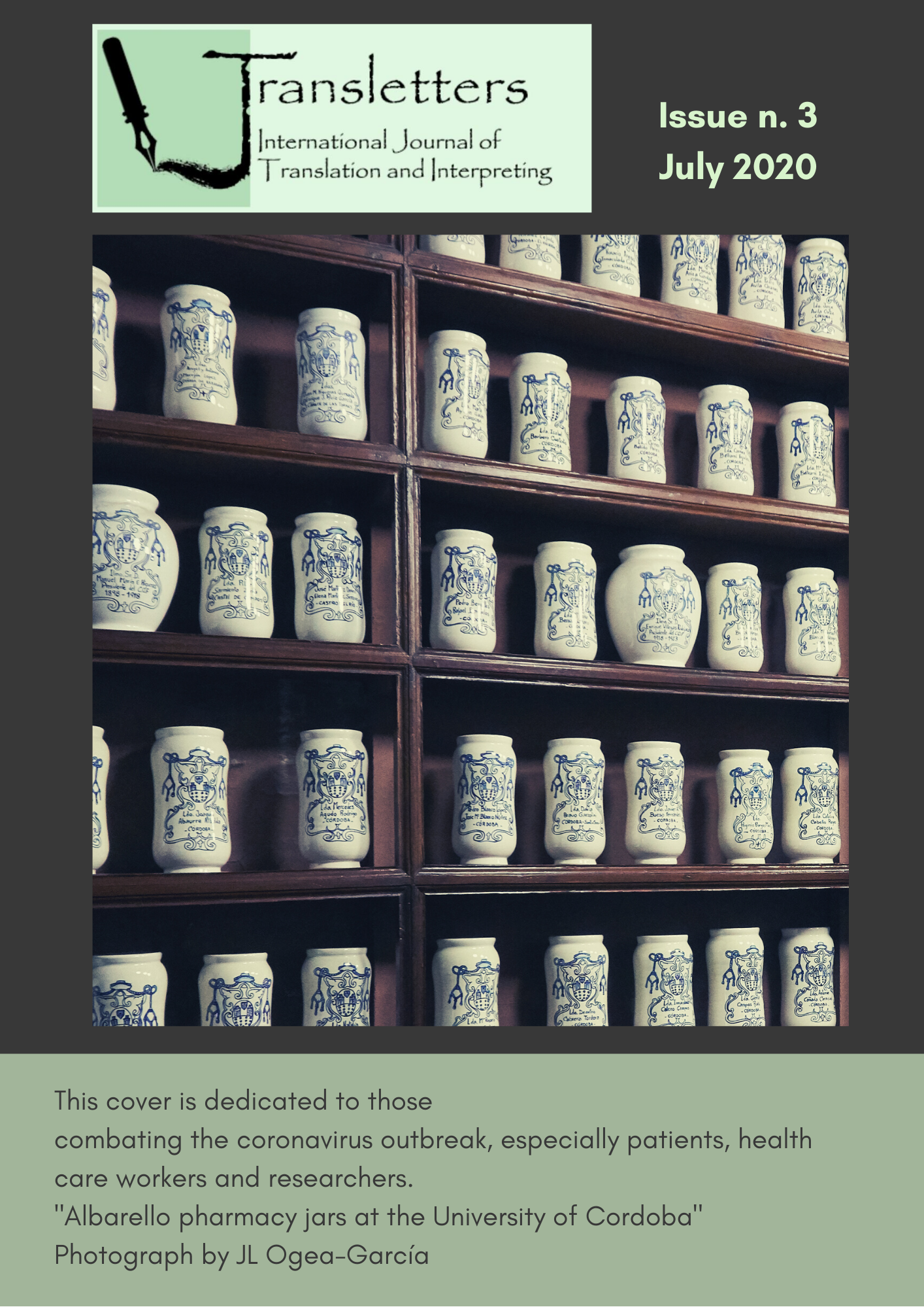Fantastic Translator Role Models and Where to Find Them A Longitudinal Perspective on Translation Students’ Possible Selves and Role Model Development
Contenido principal del artículo
Resumen
Drawing on possible selves theory and role model theory, this article explores translation students’ possibilities of envisioning their future as translators. Four MA students in a Swedish university were followed over two years through a longitudinal focus group study. The material was analyzed thematically following Braun and Clarke (2006). The results show that the students discuss themes related to possible selves and role models with both textual and extratextual dimensions, but that the two dimensions do not coincide.
Descargas
Detalles del artículo
Política propuesta para las revistas que ofrecen acceso abierto
Los/as autores/as que publican en esta revista aceptan las siguientes condiciones:
1. Los/as autores/as conservan los derechos de autor y conceden a la revista el derecho de primera publicación con el trabajo licenciado simultáneamente bajo una Licencia de Atribución de Creative Commons, la cual permite a otras personas compartir el trabajo con un reconocimiento de la autoría del trabajo y la publicación inicial en esta revista.
2. Los/as autores/as pueden establecer acuerdos contractuales adicionales para la distribución no exclusiva de la versión publicada del trabajo en la revista (por ejemplo, enviarlo a un repositorio institucional), con un reconocimiento de su publicación inicial en esta revista.
3. Se permite y anima a los/as autores/as a publicar su trabajo previo a la versión final publicada en esta revista una vez aceptado (por ejemplo, en repositorios institucionales o en su sitio web), ya que puede dar lugar a intercambios productivos, así como a una citación más temprana y mayor del trabajo publicado (Véase El efecto del acceso abierto).

